GRUBS and CONTROL
There are three different types of grubs, June Bug, European Chafer and Japanese Beetle. Our main concern is the European Chafer.
European Chafer
The European chafer was first observed as a pest problem in the 1940s in New York. Most damage occurs in light, sandy soils
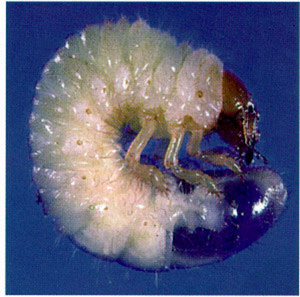
White Grub
|
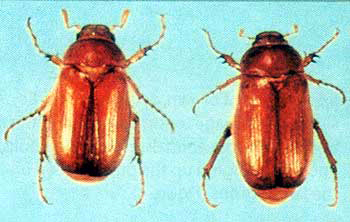
European Chafer
|
Life Cycle
Adult
- the beetle emerges from the soil in June/July
- the adults are 1/2 inch long and golden brown in colour
- the heaviest flight activity is at dusk around small trees
- eggs are laid within days of beetle flight
Larvae
- eggs hatch from July though October
- the larvae feed on the roots
- most damage occurs after egg hatch
- there is minor feeding in the spring
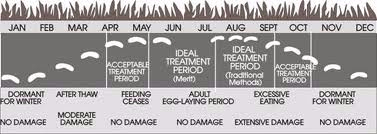
Japanese Beetle
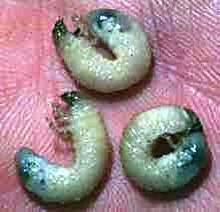
White Grub
|
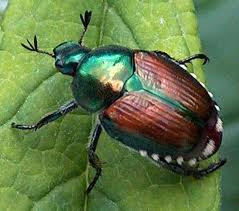
Japanese Beetle
|
Life Cycle
Adult
- adults emerge from the soil in late June through mid July
- ideal beetle flight is at a temperature of 21 degrees Celsius and relative humidity of 60%
- when temperatures exceed 35 degrees Celsius and relative humidity is greater than 60%,
- flight ceases
- beetles usually feed and mate during the morning and return to the soil in the late afternoon and evening
- egg laying continues until late July and August
- eggs hatch in about 2 weeks
Larvae
- for the winter months, grubs move deep into the soil below the frost line
- in the spring, when the soil warms, grubs move to the surface to feed for 3-4 weeks
- they pupate in late May and early June
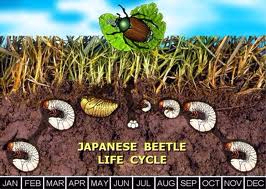
Control
Nematodes are microscopic worms that are found all over the world and feed on insects.
Benefits of Nematodes:
- help provide biological control of "soil-dwelling" insect pests
- they can infect many types of insects without harming birds or mammals
How they Work:
Nematodes carry bacteria in their body that is toxic to insects. Once they seek out the insects, they enter them through their natural body openings and release their bacteria, which multiply and eventually kill their hosts. But not before the Nematodes develop into adults, reproduce, and produce offspring. A few weeks after the initial infection, the new Nematodes develop into infective juveniles, and thousands of them emerge from the dead insect and they begin to search for their new insect hosts in the soil.
When to Apply:
It's best to apply Nematodes to moist soil when temperatures are between 15-30*C. A pre-application irrigation can be applied to moisten the soil and a post-application irrigation can be applied to wash any Nematodes to the soil surface. The post-application irrigation should be applied before spray droplets dry and must provide a tenth to a quarter inch of water to allow the Nematodes to move into the upper soil layers. Applications can be made before or even during a rainfall to wash Nematodes to the soil surface.
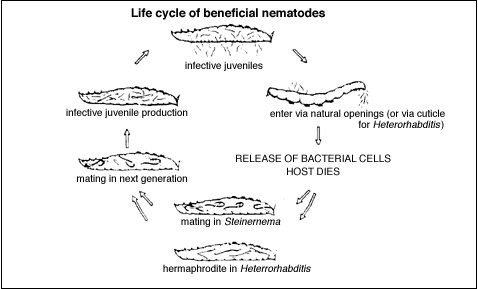
We can control Grub. Please contact our office.
|